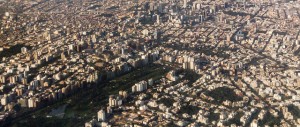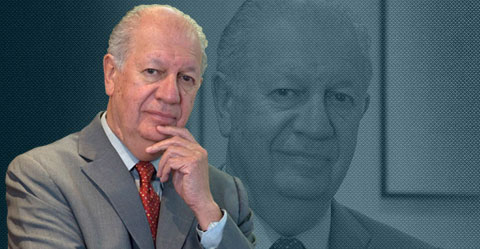 In 2007, for the first time in the history of humanity, a majority of the world’s population was living in cities. This phenomenon is the result of a process that began long before more than 50% of human beings lived in urban areas, as people started to build commercial networks and concentrate information and wealth. Cities took on a new importance, becoming more than a set of streets, traffic lights and buildings but rather places that connect us to regions, continents and the world.
In 2007, for the first time in the history of humanity, a majority of the world’s population was living in cities. This phenomenon is the result of a process that began long before more than 50% of human beings lived in urban areas, as people started to build commercial networks and concentrate information and wealth. Cities took on a new importance, becoming more than a set of streets, traffic lights and buildings but rather places that connect us to regions, continents and the world.
Within this changing panorama, one of the most important challenges is to create a network that can integrate ‘megacities’. This new urban area, consisting of the coming together of several cities in the same urban node, must cater to the transport needs and logistics of an enormous and varied range of goods and services, providing access to all forms of physical movement and exchange of information.
The phenomenon is also producing a geopolitical shift from countries to large cities. Material and digital infrastructures are changing governability, the way public policies are made and the way citizens relate to each other. Cities are seeing the creation of public spaces aimed at improving administration in order to make them more integrated, safe and socially focussed. For example, in the medium term a resident may be able to tell exactly what time public transport will pass by to take them home via a mobile app; on their way they may see that a traffic light isn’t working properly and report it to their municipality on WhatsApp and when they get home, they might order their vegetables for the week by email. They will thus be part of dynamic network that connects productive activities, social networks and homes, which could lead to a global, connected alliance that creates opportunities, greater competition and new relationships.
Soon inequality will also be measured in terms of territorial inequality, i.e.: the location of one’s home, the social services available to them and residents’ access to educational and working opportunities. For example, according to the World Health Organization there should be nine metres of park for each person. However, in my country, in the Metropolitan Area some neighbourhoods have twenty square metres while some have just two. In this regard the role and availability of resources of local governments will be fundamental when considering plans for the occupation of territory that ensure equitable and balanced development. This will require the design of neighbourhoods that are well-connected, safe, well-maintained and well-served with utilities: neighbourhoods with their own inclusive, dignified identity.
In the century of cities, very shortly 80% of the population, wealth, commerce, science and culture will be contained within them. To project a future with more equable cities we need to define public policies that allow for the free exercise of democracy. Only then will the cities of the future allow societies to construct an ‘us’ that we all feel a part of.
Leave a comment



